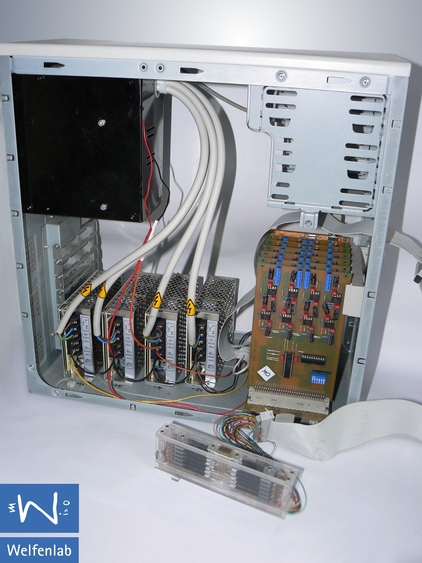Generation of Stimuli Supporting Tactile Perception of Textiles in a VR System
Dennis Allerkamp, Leibniz Universität Hannover
Virtual Reality has a lot of applications ranging from entertainment to mechanical design and medical training. With the appearance of virtual worlds where users can interact via avatars over the Internet (e.g. Second Life), companies started to promote their products as virtual artefacts – another emerging application of Virtual Reality. Virtual reality systems can be categorised by the modalities they support. In today's systems the modalities of seeing and hearing are the most commonly employed as these are also the modalities in which we as human beings mostly exchange information. They require least effort in terms of energy transfer, the corresponding sensory receptors are concentrated in the retina and the cochlea and can be excited remotely with light and sound waves respectively.
In contrast to seeing and hearing the creation of appropriate haptic stimuli demands very sophisticated hardware. Firstly, the skin with its size of 1.5 to 2 square meters is a very large organ. Therefore most haptic devices focus on a rather small part of the human body – usually the fingertip. Secondly, forces cannot be transmitted contact-free with current technology. Thus haptic devices always need direct contact to the parts of the skin where the forces are applied. Thirdly, the amount of energy is relatively high compared to other modalities, e.g. if one wants to simulate the lifting of an object with a mass of 500 g the haptic device has to create a force of approximately 5 N. All these properties make haptic simulation a complex task still presenting a lot of problems awaiting a good solution. But these efforts will result in a richer, more convincing virtual reality making applications like the promotion of textiles via the Internet possible.
Most haptic devices focus on the transmission of forces as this is the most straightforward approach to simulate the haptic presence of an object. These forces are usually exerted on the fingertip via a simple thimble, disregarding the actual force distribution on the contact area between fingertip and object. This is comparable to the haptic interaction with real objects using a real thimble. Assessing small surface features or surface roughness is very hard or even impossible in this way. Using a tactile display is a possibility to overcome this shortcoming.
 In this project a tactile display developed at the Biomedical Physics Group of the University of Exeter will be employed. It consists of an array of 24 pins that are driven by vibrating piezoelectric bimorphs. These pins are intended to produce virtual touch sensations by creating an appropriate spatiotemporal variation of mechanical disturbance over the skin of the fingertip. The principal topic of the proposed project is the search for such a spatiotemporal variation that resembles the touch sensation of a finger moving over the surface of a real textile.
In this project a tactile display developed at the Biomedical Physics Group of the University of Exeter will be employed. It consists of an array of 24 pins that are driven by vibrating piezoelectric bimorphs. These pins are intended to produce virtual touch sensations by creating an appropriate spatiotemporal variation of mechanical disturbance over the skin of the fingertip. The principal topic of the proposed project is the search for such a spatiotemporal variation that resembles the touch sensation of a finger moving over the surface of a real textile.
Various subtasks have to be addressed:
- measurement and analysis of real fabrics' surfaces
- creation of a database of virtual fabrics corresponding to real fabrics
- development of an electronic system capable of generating appropriate electrical signals driving the piezoelectric bimorphs of the tactile display
- survey of existing psychophysical studies related to human tactile perception in general and the tactile rendering of fabrics in particular
- development and implementation of promising tactile rendering strategies
- evaluation and comparison of tactile rendering strategies

